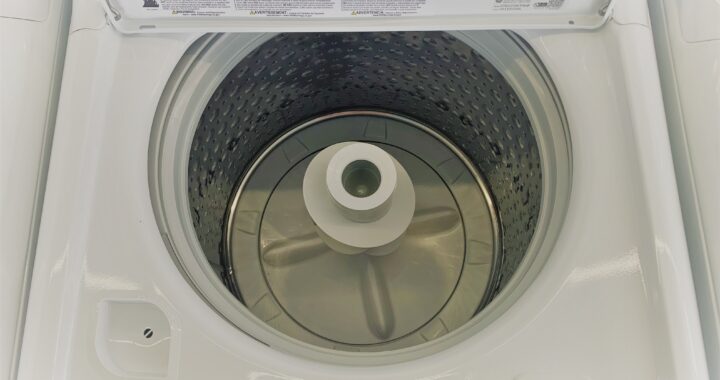We’ve all done it. We’ve got mountains of laundry and just one day to get through it all. And it’d be nice to have time to put our feet up after! So, we squeeze as many sheets, socks, sweaters and jeans into the washer as possible. Because that’s efficiency, right?
Here’s why it’s really not…
Overloading Consequences:
Unwashed clothes
When all the space inside your washer is taken up with clothes there is little room for the water and detergent to mix and circulate properly. What you end up with is a spotty clean throughout your load: some clothes have bleachy streaks from too much detergent, other items will still have stains on them from too little detergent. The fix? Wash them again in smaller piles. Time wasted.
Torn and missing clothes
Sometimes you’ll find items coming out mangled when you overload. The inside of your washer is metal which doesn’t play nice with fabric. Without space between items allowing water to help them move around, clothes push and catch on the interior components or get shoved down into the drainage system. We’ve all wondered what happens to that missing sock. Now you know.
Dead appliances
Overloading your washer and dryer puts excessive strain on essential components like the motor and circuitry. To move heavier loads the appliance expends greater energy, meaning the electronics need to conduct more electricity leading to burned out parts. Additional strain on the motor causes overheating, and once that motor burns out you’re looking at some hefty repairs or replacing the appliance entirely.
Proper Loading Technique.
The capacity of your washer and dryer can be found in your instruction manual; you’ll find the manufacturer provides this in cubic feet. However, the real determining factor as to whether or not your laundry set can handle any given load is the weight. So here’s our guide:
A standard top-load laundry set has a capacity of about 4.1-4.3 cubic feet in the washer and 6.7 cubic feet in the dryer. These units can handle around 12 pounds of fabric weight.
Front-load sets come a little bigger, with washers around 4.5-5.5 cubic feet and dryers with around 7 cubic feet, able to handle around 15-18 pounds.
Extra-large front-load laundry sets have washers with at least 6 cubic feet and dryers at about 7.5 cubic feet. These can wash loads up to about 22 pounds.
For some perspective, a King size comforter can weigh somewhere between 8 and 15 pounds. Something to consider when choosing your new washer and dryer!
If you want to protect your clothes and appliances be sure to leave at least 6 inches from the top of your load to the top of the drum. If you’re still concerned about weight, put your laundry in a thin bag like mesh or plastic and set it on a bathroom scale before filling your washer. This will guarantee your appliances a live a long life producing better results.

